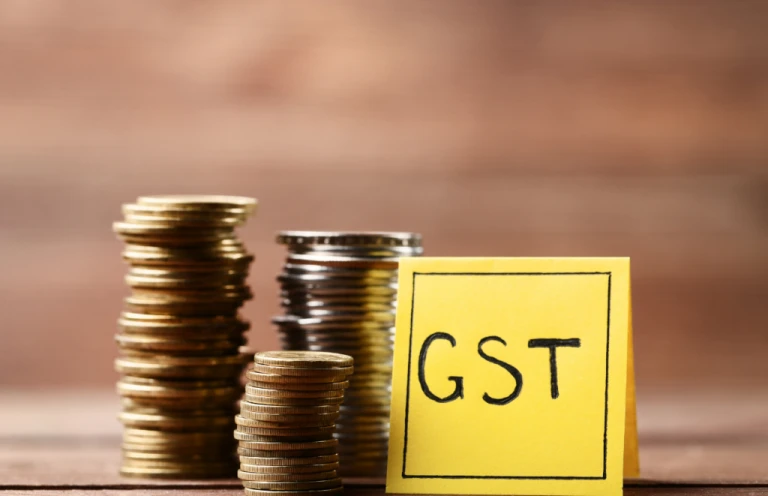Guide to GST Returns Filing – 2023

Are you a business owner struggling to understand the ins and outs of GST return filing? Well, don’t worry, because you’re not alone! The process can seem daunting, but it’s an essential part of staying compliant with India’s tax laws. In this blog post, we’ll cover everything you need to know about GST returns filing. Firstly, we’ll discuss what GST returns are and their significance. Secondly, we’ll explore who needs to file them and the criteria for filing. Lastly, we’ll delve into the frequency at which GST returns should be filed. So, sit back, relax, grab a cup of tea (or coffee), and let’s dive in!
What is a GST Return?
A GST return, firstly, is a document that contains information about the income/sales and expenses/purchases of a taxpayer registered under the Goods and Services Tax (GST) system. Secondly, it is submitted to the tax authorities, enabling them to assess the taxpayer’s financial activities. Lastly, it plays a crucial role in calculating the taxpayer’s net tax liability.
Under the GST regime, registered dealers are required to file GST returns, which encompass the following aspects:
- Purchases
- Sales
- Output GST (tax on sales)
- Input tax credit (GST paid on purchases)
Also read: What is GST?
Who Should File GST Returns?
Under the Goods and Services Tax (GST) system, businesses with an annual turnover exceeding Rs. 5 crore and those not enrolled in the QRMP scheme are obligated to file two monthly returns and one annual return. Consequently, this amounts to a total of 25 returns annually.
However, taxpayers with a turnover of up to Rs. 5 crore have the flexibility to file returns under the QRMP scheme. In this case, they need to file a total of 9 returns each year, including 4 GSTR-1 returns, 4 GSTR-3B returns, and an annual return. It is important to note that QRMP filers are still required to pay taxes on a monthly basis, even though they file returns quarterly.
Additionally, certain special cases such as composition dealers necessitate the submission of separate statements or returns. For composition dealers, the number of GSTR filings is 5 per year. Specifically, these filings comprise 4 statement-cum-challans in CMP-08 and 1 annual return, namely GSTR-4.
Types of GST Returns
Below is a compilation of all the returns mandated by the GST Law, along with their respective deadlines.
| Return Form | Description | Frequency | Due Date |
|---|---|---|---|
| GSTR-1 | Details of outward supplies of taxable goods and/or services affected. | Monthly | 11th of the next month. |
| Quarterly (If opted under the QRMP scheme) | 13th of the month succeeding the quarter. | ||
| GSTR-3B | Summary return of outward supplies and input tax credit claimed, along with payment of tax by the taxpayer. | Monthly | 20th of the next month. |
| Quarterly (For taxpayers under the QRMP scheme) | 22nd or 24th of the month succeeding the quarter. | ||
| GSTR-4 | Return for a taxpayer registered under the composition scheme under Section 10 of the CGST Act. | Annually | 30th of the month succeeding a financial year. |
| GSTR-5 | Return to be filed by a non-resident taxable person. | Monthly | 20th of the next month.(Amended to 13th by Budget 2022; yet to be notified by CBIC.) |
| GSTR-5A | Return to be filed by non-resident OIDAR service providers. | Monthly | 20th of the next month. |
| GSTR-6 | Return for an input service distributor to distribute the eligible input tax credit to its branches. | Monthly | 13th of the next month. |
| GSTR-7 | Return to be filed by registered persons deducting tax at source (TDS). | Monthly | 10th of the next month. |
| GSTR-8 | Return to be filed by e-commerce operators containing details of supplies effected and the amount of tax collected at source by them. | Monthly | 10th of the next month. |
| GSTR-9 | Annual return by a regular taxpayer. | Annually | 31st December of the next financial year. |
| GSTR-9C | Self-certified reconciliation statement. | Annually | 31st December of the next financial year. |
| GSTR-10 | Final return to be filed by a taxpayer whose GST registration is cancelled. | Once, when the GST registration is cancelled or surrendered. | Within three months of the date of cancellation or date of cancellation order, whichever is later. |
| GSTR-11 | Details of inward supplies to be furnished by a person having UIN and claiming a refund | Monthly | 28th of the month following the month for which statement is filed. |
| ITC-04 | Statement to be filed by a principal/job-worker about details of goods sent to/received from a job-worker | Annually(for AATO up to Rs.5 crore) Half-yearly(for AATO > Rs.5 crore) | 25th April where AATO is up to Rs.5 crore. 25th October and 25th April where AATO exceeds Rs.5 crore. (AATO = Annual aggregate turnover) |

Also read: Mutual fund gains taxation in India
Does GST have to be Paid Monthly?
Regular taxpayers, including those who have opted for the quarterly filing of returns through the QRMP scheme, are required to pay GST on a monthly basis. Additionally, this requirement applies to all taxpayers regardless of their chosen filing frequency.
However, small taxpayers have the choice to opt for the composition scheme under GST if their annual aggregate turnover is within the limit of Rs. 1.5 crore for manufacturers/dealers and Rs. 50 lakh for pure service providers. Furthermore, these taxpayers can file a combined statement and challan on a quarterly basis and make tax payments accordingly.
Ten Steps to File Your GST Return Online
- Start by ensuring your GST registration and obtaining the 15-digit GST identification number, which is based on your state code and PAN. If you haven’t registered yet, complete the online registration process.
- Visit the GST portal.
- Click on the ‘services’ button.
- Access the ‘returns dashboard’ from the drop-down menu, where you need to provide the financial year and return filing period.
- Choose the specific return you want to file and click on ‘prepare online’.
- Enter all the necessary details, including amounts and any applicable late fees.
- After filling in the information, save it, and you will see a success message on your screen.
- Proceed to submit the return by clicking on the ‘submit’ button at the bottom of the page.
- Once your return status changes to ‘submitted’, navigate to the payment of tax section. Check your cash and credit balance by clicking on ‘check balance’. Specify the credit amount you want to utilize and click on ‘offset liability’ to make the payment. Confirm the transaction by clicking ‘ok’.
- Finally, select the declaration box and choose an authorized signatory from the drop-down list. Then, either file the form with DSC or file it with EVC. Proceed to make the payment in the subsequent step, according to your respective GST requirements.
The Bottom Line
Filing GST returns is a crucial aspect of complying with the GST laws in India. In order to ensure compliance, it is important to understand the requirements and deadlines for each return type. Additionally, it is essential to keep accurate records of all transactions.
By staying up-to-date and compliant with GST regulations, businesses can not only avoid hefty penalties and fines but also ensure smooth operations and financial stability. Therefore, it is crucial for businesses to stay informed and adhere to the latest GST guidelines. Additionally, proper maintenance of records can help with easy reconciliation of accounts at a later date.
Filing your GST returns on time, furthermore, helps you stay within the legal framework, and additionally ensures that your business runs smoothly without any hindrance. Therefore, it is crucial to make sure that you’re aware of all the necessary details and guidelines before filing your GST return.
As always, it’s best to consult a tax professional or accountant if you have any doubts or questions regarding your specific situation. Additionally, by seeking the guidance and expertise of professionals, you can save time, money, and avoid unnecessary errors. Moreover, their assistance can provide valuable insights and ensure that you navigate the complexities of taxation effectively.
Follow us on Instagram.









